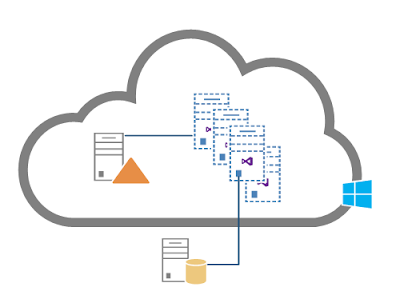Suggestion of the week
- Episode 117: Introducing the new Windows Azure Management Libraries (Channel 9) - Very good explanation from Brady in this Cloud Cover show episode.
- Using a Surface 2 (RT/ARM) to get actual work done + Remote Desktop + Visual Studio + Azure - Amazing post full of tips and golden information. A must-read article.
Cloud
- Windows Azure Storage Queues VS Windows Azure Service Bus Queues - Nice and useful post that compares azure storage queues and Azure Service Bus queues.
- Remote PowerShell in Azure IAAS Virtual Machines (Sri Harsha BS) - Troubleshooting and resolving of different issues using Remote PowerShell.
- Snip/Shot by Toddy Mladenov - Good clarification about the very popular buzzword: as a Service.
- SoundCloud Now Reaches 250 Million Listeners In Its Quest To Become The Audio Platform Of The Web - See how this company has grown in the past few months.
- Some tips and tricks for azure table storage (Purbasha Ghosh) - Very interesting post that shows why it is to think differently to really take advantage of the cloud capabilities.
- Windows Azure Guidance - Cloud Design Patterns Alpha drop... - This post announced a new drop of an incredible source of information about Cloud Desing Pattern.
- Exploring the AutoScale feature in Windows Azure Websites - Nice tutorial that shows some of the new feature in Azure autoscale.
Database
- Create Database Diagrams of Your Windows Azure SQL Databases - Really? I though it was possible to connect with sql manager and make a diagram. I must try the dbforge tool, looks pretty slick.
- SQL Express v LocalDB v SQL Compact Edition (jerry-nixon) - Excellent post to demystify the differences between these Microsoft's database.
Programming
- Adaptive Access Layers + Dependency Injection = Productivity - Nice article that told how a company implemented some pattern to improve their productivity.
- Programming CSS: Bundling and Minification - Excellent article to get started with the bundling and minifying concept to get better performance.
- Configuring DB Connection and Code-First Migration for Identity Accounts in ASP.NET MVC 5 and Visual Studio 2013 - Good tutorial that explains really clearly how to use the migration feature in EF with the new as.net and VS.
- MVC Patterns (Active and Passive Model) and its implementation using ASP.NET Web forms (Khademul Basher) - Interesting post about MVC pattern using pasove Model.
- Katana 2 is Available! (Brian Benz) - This post announced the release of Katana 2.0 and reference another post to get started with this project.
- Command Pattern - Simple and very clear introduction to Commands Patter.
UX
- You Definitely Want to Beta Your App - Nice post where the author shares is experience about the benefit of beta testing our application.
Miscellaneous
- Got a HOT Post on Your Blog? Here’s What to Do To Find and Optimise It (Darren Rowse) - Interesting tips.
~Frank










 Programming Entity Framework: Code First
Programming Entity Framework: Code First







